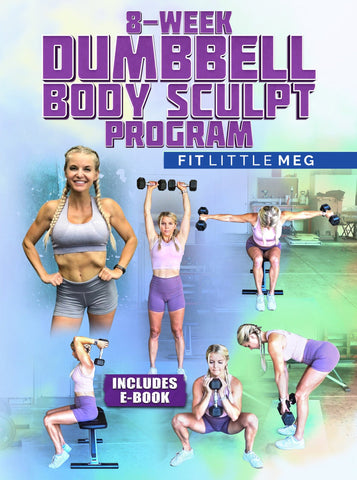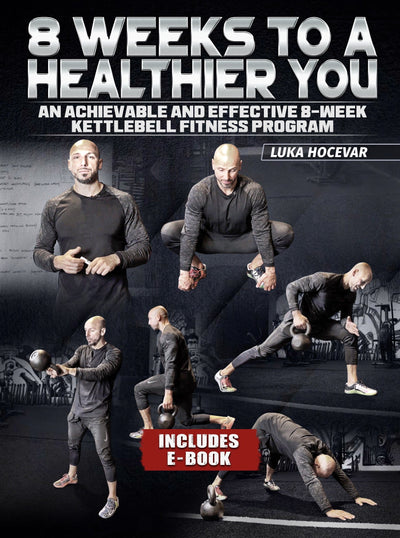How Long Should a Kettlebell Workout Be
In the ever-evolving landscape of fitness, kettlebell workouts have emerged as a popular and effective means of achieving strength, endurance, and overall fitness. The compact nature of these weights, coupled with their versatility, has made them a go-to choice for many fitness enthusiasts. But a common question arises: how long should a kettlebell workout be? In this blog, we'll explore the factors that play into determining the optimal duration of a kettlebell workout to help you maximize your gains while avoiding burnout.
Kettlebells are an amazingly adaptive tool that you can use to modify your workouts and achieve incredible results. With Kettlebells You can even vary the workout based on time and get results with a 5 minute kettlebell workout, 6 minute kettlebell workout, 20 minute kettlebell workout, 15 minute kettlebell workout, and EVEN 45 minute kettlebell workouts!
What this article covers:
- Quality Over Quantity
- Fitness Goals
- Intensity and Rest Periods
- Frequency
- Warm-up and Cool-down
- Listening to Your Body
Quality Over Quantity
When it comes to kettlebell workouts, the old adage "quality over quantity" holds true. The duration of your workout should prioritize effectiveness and proper form over simply clocking in a specific amount of time. A well-executed 20-minute workout can be more beneficial than a haphazard 45-minute one. Concentrate on performing each movement correctly and efficiently, and gradually increase the duration as your proficiency improves.
Fitness Goals
The duration of your kettlebell workout should align with your fitness goals. Are you aiming for fat loss, muscle gain, improved endurance, or overall strength? Different goals necessitate different approaches. For instance, a high-intensity interval training (HIIT) session with kettlebells might last 15-30 minutes, focusing on short bursts of intense effort, while a strength-focused workout could be longer, up to 45 minutes or more.
Intensity and Rest Periods
The intensity of your kettlebell workout plays a significant role in determining its duration. Shorter, more intense workouts often require less time, as they tax your muscles and cardiovascular system at a higher rate. HIIT workouts, characterized by intervals of intense activity followed by brief periods of rest, can be very effective in a shorter timeframe. On the other hand, if you're engaging in a more traditional strength training session, longer rest periods might be required, elongating the overall workout.
Frequency
Consider how often you plan to engage in kettlebell workouts throughout the week. If you're planning daily sessions, each workout could be shorter since the cumulative effect of multiple sessions can lead to fatigue over time. However, if you're aiming for two to three sessions per week, you might be able to dedicate more time to each workout.
Warm-up and Cool-down
Don't forget to factor in warm-up and cool-down periods. A proper warm-up helps prepare your muscles and joints for the upcoming movements, reducing the risk of injury. Similarly, a cool-down routine aids in recovery and flexibility. These periods are essential components of your workout, and while they add to the overall time, they are not to be skipped.
Listening to Your Body
No matter how meticulously you plan your kettlebell workout duration, always listen to your body. Pushing yourself beyond your limits can lead to burnout, injuries, or overtraining. If you're feeling fatigued, it's okay to cut your session short or opt for a lighter workout. Consistency over time is more important than trying to cram too much into a single session.
In the realm of kettlebell workouts, there's no one-size-fits-all answer to how long your sessions should be. The optimal duration depends on various factors, including your fitness goals, intensity level, frequency, and personal capacity. The key is to strike a balance between efficiency, effectiveness, and sustainability. Whether you're crunched for time and opt for a high-intensity session or you have more leisure to engage in a longer strength-focused routine, remember that the quality of your movements and your body's response should guide your decisions. Always prioritize safety, proper form, and listening to your body as you embark on your kettlebell journey.
Did you find the blog helpful? If so, consider checking out other guides:
- Kettlebell Workout 30 Minutes
- 10 Minute Kettlebell Workout
- Kettlebell Lower Back
- Kettlebell Back Fat
- Kettlebell Cross Back Lunge
- Back Squat with Kettlebells
- Kettlebell Back Extension
- Kettlebell Upright Row
- Renegade Rows with Kettlebells
- Kettlebell Gorilla Rows
- The Kettlebell Ballistic Row
- Bent Over Kettlebell Row
- Kettlebell Push Up with Row
- Double Kettlebell Snatch
- The Kettlebell Half Snatch





